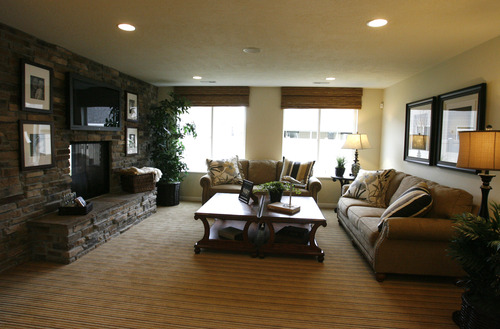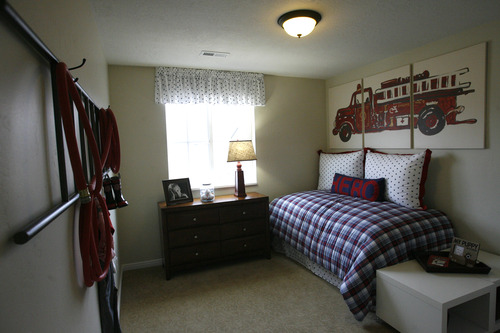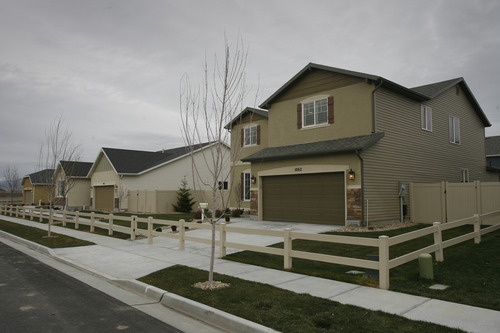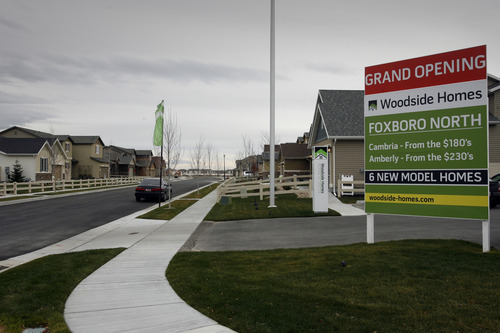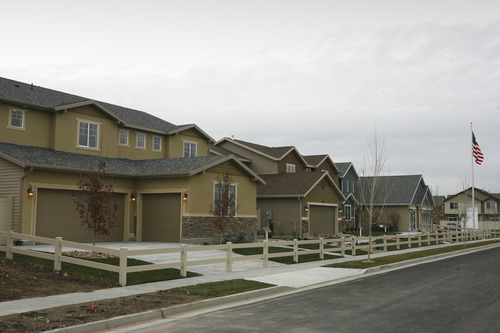This is an archived article that was published on sltrib.com in 2012, and information in the article may be outdated. It is provided only for personal research purposes and may not be reprinted.
Utah-based Woodside Homes, one of the top homebuilders in the U.S., is back after a long slog through the wilderness and facing a vastly different housing market than the one it presided over four years ago.
It wasn't easy. In 2008, the company was effectively broke, forced into bankruptcy by its creditors after defaulting on more than $730 million in debt.
At the time, Woodside was one of the country's biggest privately owned builders, with operations that stretched from California to Florida. At its height in 2005, the North Salt Lake-based company closed deals on nearly 3,700 homes. Revenue was an eye-popping $1.4 billion — twice as much as just three years earlier.
Then came the housing collapse and a painful restructuring. Woodside exited bankruptcy in 2010 with a new CEO and a staff that had shrunk to 200 from about 800. The company has left the national stage, and now calls itself a regional builder. The 888 homes it built last year were in just five states — Arizona, California, Nevada, Texas and Utah.
Joel Shine, who in 2009 was brought in to advise the creditors committee and forestall a Woodside liquidation, took the reins of the company a year later when it emerged from bankruptcy. Today, the slimmed down and tuned up company is "one of the strongest private homebuilders in the country," says Shine.
Shine knows this because, he says, "I know how much money we have in the bank I know how little [debt] that we have. I know how profitable we are, and I know there aren't many [other builders] who can say the same."
—
A resurgence • By many estimates, the U.S. housing market is growing again, if only slowly. More than 200 metro markets tracked by the National Association of Home Builders, including Salt Lake City, are "improving," the trade group said earlier this month. Forty-four states have at least one metro area that is doing better, up from 38 states in November. Even hard-hit Nevada and Arizona are showing signs of life. Shine said some of the most successful projects Woodside has tackled recently have been in Las Vegas. In the Phoenix area prices are appreciating faster than anywhere else the company is building.
"We are raising pricing. The quantity of inventory in most of our markets is low, and in many instances at all-time lows" after speculators swooped in to feast on hundreds of foreclosed properties, he said. "The affordability ratios [of home prices versus incomes], that were terrible before, are now wonderful. In many of the markets that we operate in, you can actually buy a house and have your mortgage be lower than renting a comparable rental property. And in most of these markets, there is job growth."
The industry's resurgence hasn't gone unnoticed. In October, a group of investors led by Los Angeles-based Oaktree Capital Management and Stonehill Capital Management injected $203 million into Woodside, increasing their stakes in the company and betting it will produce the double-digit yields that private equity firms expect their investments to earn. Oaktree, Stonehill and a third company, John Hancock Life Insurance, have become Woodside's majority owners.
"I wouldn't speak for them specifically, but broadly speaking this type of investment is a two-decision type of investment," Shine said. "Decision number one is, do you think that housing is at a cyclical low and it's going to come up?
"If you come to the conclusion that the answer is yes, then you go to the next question, which is, 'How do I make that bet in a way that is most judicious? And so once these guys had decided that the housing market was close to the bottom and heading back up, which I believe is an accurate description, then they had to look around and decide who was a good operator and who they felt could best take advantage of that opportunity.
"And to be frank, there weren't a lot of choices."
A spokeswoman would only confirm that Oaktree had boosted its investment. Stonehill representatives did not return a request for comment.
—
Downturn impacts • Nobody seems to know how many large, privately held builders failed during the recession. Shine said Ernst and Young told him that it figured that a thousand went bankrupt and the number of survivors could be counted on two hands. The homebuilders association in Washington hasn't counted the number of companies that went out business. All it knows is that its membership has fallen 40 percent since the downturn began. Many never bothered with bankruptcy and simply quit, spokesman Paul Lopez said.
There is a telling clue that illustrates the havoc caused by the downturn. In 2005, when Woodside was closing thousands of deals and raking in huge piles of revenue, the company was ranked No. 27 in the country by closings by Builder magazine. Last year, even though its revenue had fallen 84 percent from six years earlier, and closings were down 76 percent, Woodside's ranking was down only two notches to No. 29.
"They are in line with the rest of the large builders on the list, most of which lost similar percentages of revenue and closings," Builder editor Denise Dersin said.
Wall Street apparently believes the housing market is coming back. In the past 12 months, the stocks of publicly traded builders have taken off as investors bid up their shares. D.R. Horton, PulteGroup and Lennar Corp., the top three companies on Builder's list, are up more than 60 percent, 200 percent and 50 percent, respectively. Although Oaktree and Stonehill aren't talking publicly, fast-paced gains such as those make it likely that infusing money into Woodside was a more prudent bet.
"It's interesting," Shine said. "We actually were approached by some investors a few years ago, and we said no. We said yes this time because the playing field looked appealing. It looked like we could make a good return on the money for them. It looked like growing the company was consistent with where the industry and the economy were going. ... It just felt like it was the right time."
He demurred when asked what Woodside will do differently during this housing cycle, which is characterized by historically low mortgage rates and pent-up buyer demand on the one hand, but low inventories and economic uncertainties on the other. Instead, he dropped hints parenthetically during an hourlong interview. Woodside will not be a national builder anymore. The company is focused on profits and not revenue. Its customer strategy is to sell simpler homes that are in line with current customer preferences and keep prices low. Unlike the past, the company will keep debt low and hold more money in reserve.
"I don't know what is or isn't a shift," he said. "I can only [run the company] the way the new board and I have decided to do it, which is we don't have some hard targets that say we want to double in size in three years.
"We don't have any sort of grandiose growth goal. We want to be opportunistic and grow the profitability as quickly as we can and still do a good job as a homebuilder."
Twitter: @sltribpaul —
What trends mean to buyers, sellers
Low mortgage rates (3.37 percent for a 30-year loan, 2.65 percent for a 15-year) and job gains continue to boost the housing market, with sales of existing homes at the highest level in five years and new construction up double digits.
The median price for a home being resold is up more than 10 percent year-over-year in the state (to $183,000, and to $204,950 in Salt Lake City) and nationally (to $180,600).
Despite the rise in sales and the median, the levels of the former remain well below what's consistent with a healthy market, and the latter are well off peaks of five years ago.
More sellers are putting homes on the market because confidence is growing they can get a good price, but inventories remain at 10-year lows as the housing market makes a slow comeback from its collapse.
Source: Realtors groups, homebuilder associations, Freddie Mac, Fannie Mae




